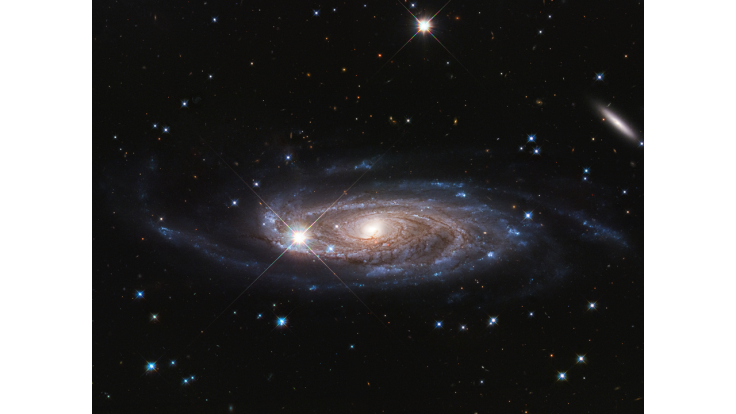'Godzilla Galaxy' May Be The Largest In The Local Universe
KEY POINTS
- UGC 2885 may just be the largest known galaxy in the local Universe
- Its nickname 'Rubin's Galaxy' honors astronomer Vera Rubin who measured it in the 1980s
- It appears to be a 'gentle giant' that did not have major galactic mergers
- Researchers are trying to understand how the isolated galaxy got so big
Researchers reported their observations of a galaxy so massive, it may just be the largest known galaxy in the local Universe. Although it has been known to science for many years now, how it got so massive remains a mystery.
‘Rubin’s Galaxy’
Approximately 232 million light-years away in the Perseus constellation, a galaxy two and a half times wider than our Milky Way has quietly been growing. Called UGC 2885, the galaxy with 10 times more stars than the Milky Way is so massive that NASA says it may just earn the nickname “Godzilla Galaxy” for being the largest known in the local Universe.
For now, however, researchers gave it the nickname “Rubin’s galaxy” after astronomer Vera Rubin who observed and measured the galaxy with NASA’s Hubble Space Telescope in the 1980s.
Gentle Giant
So how did UGC 2885 become as massive as it is? Many big galaxies such as the Milky Way become bigger by swallowing up other galaxies, but it appears as though this may not be the case for UGC 2885.
“How it got so big is something we don't quite know yet,” Benne Howlerda of the University of Kentucky said. His team presented at the American Astronomical Society meeting in Hawaii. “It's as big as you can make a disk galaxy without hitting anything else in space “
What's interesting is that as massive as the galaxy is, it appears to have gotten to its “Godzilla” size by no violent means, simply absorbing hydrogen from intergalactic space to fuel star birth half the rate of Milky Way. In fact, researchers say that the isolated galaxy may be a gentle giant with an equally gentle supermassive black hole.
New Telescopes, New Discoveries
To unravel the mystery, Howlerda's team is currently looking into the number of globular star clusters surrounding the galaxy using the Hubble Space Telescope.
That said, further observations using the upcoming James Webb Space Telescope as well as the Wide-Field Infrared Survey Telescope (WFIRST) could give an even clearer view of just how the massive galaxy grew that large.
“The infrared capability of both space telescopes would give us a more unimpeded view of the underlying stellar populations, ” Howlerda said.

© Copyright IBTimes 2024. All rights reserved.





















